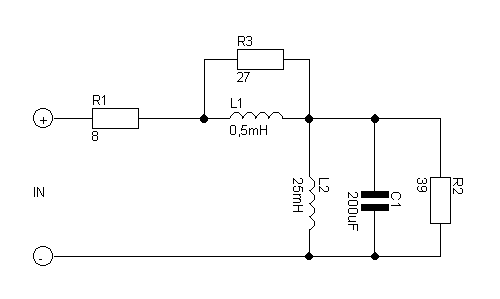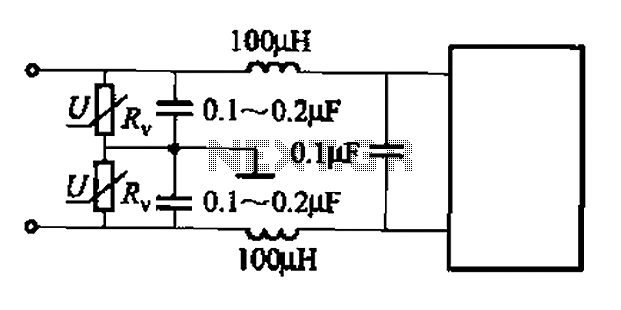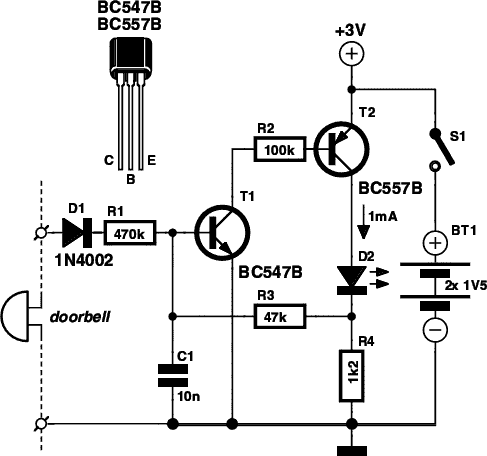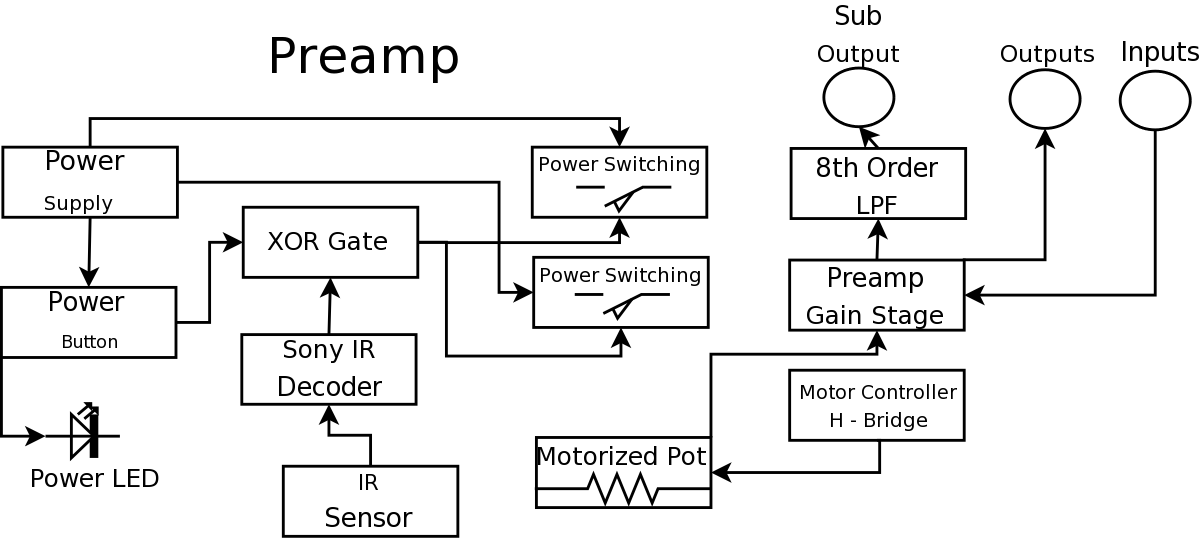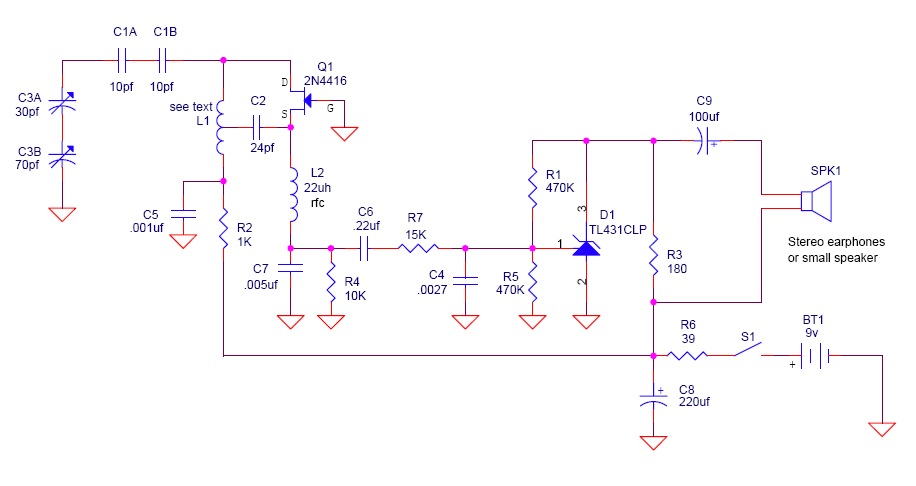
Mini Audio Mixer circuit

When switches SW1, SW2, or SW3 are open, the input sensitivity is optimized for high-output devices such as CD players, tuners, tape recorders, iPods, miniDisc players, and computer audio outputs. The 750 Ohm value for resistors R3, R13, and R17 may sometimes be difficult to source. In such cases, two 1.5K Ohm resistors connected in parallel can be utilized as a replacement for each resistor. An audio amplifier is an electronic device that increases low-power audio signals, which primarily consist of frequencies between 20 Hz and 20,000 Hz—the range of human hearing—to a level adequate for driving loudspeakers. It represents the final stage in a typical audio playback chain. The preceding stages in this chain consist of low-power audio amplifiers that perform functions such as pre-amplification, equalization, tone control, and mixing effects, or they may derive from audio sources like record players, CD players, and cassette players. Most audio amplifiers necessitate these low-level inputs to conform to line levels. While the input signal to an audio amplifier may only measure a few hundred microwatts, its output can reach tens, hundreds, or even thousands of watts. Further information regarding power audio amplifiers can be found on Wikipedia. A video tutorial is available that demonstrates how to construct a very simple audio amplifier using the LM386 amplifier chip, which can be built for less than $20 (or potentially less than $8 in some regions) and used to amplify any low-level audio signal, including those from guitars, bass instruments, or MP3 players.
An audio amplifier circuit typically includes several key components that work together to enhance audio signals. The input stage, often incorporating operational amplifiers or transistors, is responsible for receiving the low-level audio signals from various sources. The input sensitivity can be adjusted via the aforementioned switches (SW1, SW2, SW3), allowing the circuit to accommodate different signal levels from high-output devices.
The resistors R3, R13, and R17 are critical in setting the input impedance and ensuring proper signal matching. When these 750 Ohm resistors are replaced with two 1.5K Ohm resistors in parallel, the equivalent resistance remains at 750 Ohms, thus maintaining the circuit's intended functionality while providing flexibility in sourcing components.
In the amplification stage, the LM386 chip serves as the core component, known for its low voltage operation and ability to deliver a significant power output suitable for driving speakers. The output stage may include additional components such as capacitors and inductors to filter the signal and prevent distortion, ensuring a clean audio output.
The power supply for the circuit is also a vital consideration, as it must provide adequate voltage and current to support the amplifier's operation while minimizing noise that could affect audio quality. Proper grounding and layout are essential to avoid interference and maintain signal integrity throughout the circuit.
Overall, this audio amplifier circuit exemplifies the principles of audio signal processing, enabling users to amplify low-level audio inputs effectively while accommodating a variety of audio sources.When SW1, SW2 or SW3 are open the input sensitivity is suited to high-output devices like CD players, tuners, tape recorders, iPods, miniDisc players, computer audio outputs etc. Sometimes, the 750 Ohm value for R3, R13 and R17 resistors could be not easy to find. In this case, two 1K5 resistors wired in parallel can be used to replace each item. An audio amplifier is an electronic amplifier that amplifies low-power audio signals (signals composed primarily of frequencies between 20 - 20 000 Hz, the human range of hearing) to a level suitable for driving loudspeakers and is the final stage in a typical audio playback chain. The preceding stages in such a chain are low power audio amplifiers which perform tasks like pre-amplification, equalization, tone control, mixing/effects, or audio sources like record players, CD players, and cassette players.
Most audio amplifiers require these low-level inputs to adhere to line levels. While the input signal to an audio amplifier may measure only a few hundred microwatts, its output may be tens, hundreds, or thousands of watts. More explanation about power audio amplifier can be found at wikipedia. org This is a video tutorial about how to a very simple audio amplifier based on the LM386 amplifier chip.
It can be built for less than $20 (or might be less than $8 in some countries) and used to amplify any low level audio signal including a guitar, bass or mp3 player. 🔗 External reference
An audio amplifier circuit typically includes several key components that work together to enhance audio signals. The input stage, often incorporating operational amplifiers or transistors, is responsible for receiving the low-level audio signals from various sources. The input sensitivity can be adjusted via the aforementioned switches (SW1, SW2, SW3), allowing the circuit to accommodate different signal levels from high-output devices.
The resistors R3, R13, and R17 are critical in setting the input impedance and ensuring proper signal matching. When these 750 Ohm resistors are replaced with two 1.5K Ohm resistors in parallel, the equivalent resistance remains at 750 Ohms, thus maintaining the circuit's intended functionality while providing flexibility in sourcing components.
In the amplification stage, the LM386 chip serves as the core component, known for its low voltage operation and ability to deliver a significant power output suitable for driving speakers. The output stage may include additional components such as capacitors and inductors to filter the signal and prevent distortion, ensuring a clean audio output.
The power supply for the circuit is also a vital consideration, as it must provide adequate voltage and current to support the amplifier's operation while minimizing noise that could affect audio quality. Proper grounding and layout are essential to avoid interference and maintain signal integrity throughout the circuit.
Overall, this audio amplifier circuit exemplifies the principles of audio signal processing, enabling users to amplify low-level audio inputs effectively while accommodating a variety of audio sources.When SW1, SW2 or SW3 are open the input sensitivity is suited to high-output devices like CD players, tuners, tape recorders, iPods, miniDisc players, computer audio outputs etc. Sometimes, the 750 Ohm value for R3, R13 and R17 resistors could be not easy to find. In this case, two 1K5 resistors wired in parallel can be used to replace each item. An audio amplifier is an electronic amplifier that amplifies low-power audio signals (signals composed primarily of frequencies between 20 - 20 000 Hz, the human range of hearing) to a level suitable for driving loudspeakers and is the final stage in a typical audio playback chain. The preceding stages in such a chain are low power audio amplifiers which perform tasks like pre-amplification, equalization, tone control, mixing/effects, or audio sources like record players, CD players, and cassette players.
Most audio amplifiers require these low-level inputs to adhere to line levels. While the input signal to an audio amplifier may measure only a few hundred microwatts, its output may be tens, hundreds, or thousands of watts. More explanation about power audio amplifier can be found at wikipedia. org This is a video tutorial about how to a very simple audio amplifier based on the LM386 amplifier chip.
It can be built for less than $20 (or might be less than $8 in some countries) and used to amplify any low level audio signal including a guitar, bass or mp3 player. 🔗 External reference
Warning: include(partials/cookie-banner.php): Failed to open stream: Permission denied in /var/www/html/nextgr/view-circuit.php on line 713
Warning: include(): Failed opening 'partials/cookie-banner.php' for inclusion (include_path='.:/usr/share/php') in /var/www/html/nextgr/view-circuit.php on line 713
